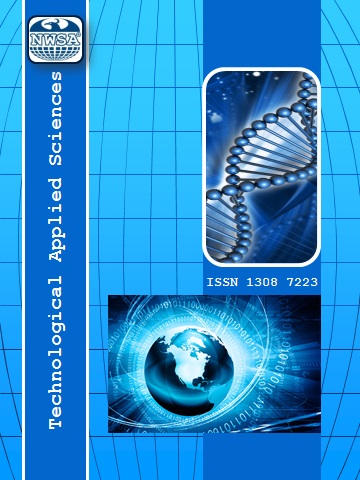References
[1] Ates, H., Turker, M., and Kurt, A., (2007). Effect of friction pressure on the properties of friction welded MA956 iron-based superalloy. Materials & Design, 28:948-953.
[2] Kırık, I., (2012). Sürtünme Kaynağı ile Birleştirilmiş AISI 1040/AISI 304L Çelik Çiftinin Elektrokimyasal Korozyon Davranışının Araştırılması (Doktora Tezi). Elazığ: Fırat Universitesi Fen Bilimleri Enstitüsü.
[3] Tharmaraj, R., Hynes, N., and Shenbaga Velu, P., (2020). Investigation on friction stud welded AMC/AISI 304 steel joints with ceramic intercoating. Journal of the Brazilian Society of Mechanical Sciences and Engineering, 42(10):1-8.
[4] Ozdemir, N., (2005). Investigation of the mechanical properties of friction-welded joints between AISI 304L and AISI 4340 steel as a function rotational speed. Materials Letters, 59:25042509.
[5] Hynes, N.R.J., Nagaraj, P., and Sujana, J.A.J., (2014). Ultrasonic evaluation of friction stud welded AA 6063/AISI 1030 steel joints. Materials and Design, 62:118123.
[6] Jebaraj, A.V., Kumar, L.A., and Deepak, C.R., (2017). Investigations on anisotropy behavior of duplex stainless steel AISI 2205 for optimum weld properties. Procedia Engineering, 173:883-890.
[7] Hynes, N.R.J., Raja, S., Sujana, J.A.J., Benita, B., and Sankaranarayanan, R., (2021). Numerical simulation of axial shortening distance in friction stud welding of aluminium/mild steel joints. Materials Today: Proceedings, 47:7127-7132.
[8] Kimura, M., Sano, Y., Kusaka, M., and Kaizu, K., (2022). Methods for improving joint strength of friction stud welded AA5083 alloy joints. Journal of Advanced Joining Processes, 5:100075.
[9] Çetkin, E., (2020). Farklı kaynak parametrelerinde sürtünme kaynağı ile birleştirilmiş AISI304/AISI5140 çelik çiftlerinin mekanik ve mikroyapılarının araştırılması. BEÜ Fen Bilimleri Dergisi, 9(4):1724-1733.
[10] İmak, A., Kırık, İ. ve Çetkin, E., (2020). Sürtünme karıştırma saplama kaynak metodu ile birleştirilen AISI 5140 çeliği ile AISI 316 paslanmaz çeliğin mikroyapısal özelliklerinin belirlenmesi. Bingöl Üniversitesi Teknik Bilimler Dergisi, 1(1):41-48.
[11] Kırık, İ. and Abak, D., (2022). Friction Weldıng of AISI 1020 with Ramor 500 Steel: Microstructure. Tensile and Fatigue Strength. Technological Applied Sciences, 17(1):39-52.
[12] Sarsılmaz, F., Kırık, İ., and Ay, M., (2017). Sürtünme kaynak yöntemi ile birleştirilmiş SCR 420/AISI 1040 çelik çiftlerinin arayüzey mikroyapı özelliklerinin incelenmesi. Fırat Üniversitesi Mühendislik Bilimleri Dergisi, 29(2):51-56.
[13] Özdemir, N., Sarsılmaz, F., and Hasçalık, A., (2007). Effect of rotational speed on the interface properties of friction-welded AISI 304L to 4340 steel. Materials & Design, 28(1):301-307.
[14] Hasçalik, A., Ünal, E., and Özdemir, N., (2006). Fatigue behaviour of AISI 304 steel to AISI 4340 steel welded by friction welding. Journal of Materials Science, 41:32333239.
[15] Ünal, E., Karaca, F., and Sarsılmaz, F., (2019). Investigation of interface microstructure properties of AISI 316l /AISI 4140 steel couple welded by friction welding process. Journal of the Faculty of Engineering and Architecture of Gazi University, 35(2):701-708.
[16] Kırık, I. and Özdemir, N., (2013). Weldability and joining characteristics of AISI 420/AISI 1020 steels using friction welding. International Journal of Material Research, 8:769775.
[17] Mercan, S., Aydin, S., and Özdemir, N., (2015). Effect of welding parameters on the fatigue properties of dissimilar AISI 2205AISI 1020 joined by friction welding. International Journal of Fatigue, 81:78-90.
 +90(533) 652 66 86
+90(533) 652 66 86 nwsa.akademi@hotmail.com
nwsa.akademi@hotmail.com Fırat Akademi Samsun-Türkiye
Fırat Akademi Samsun-Türkiye
